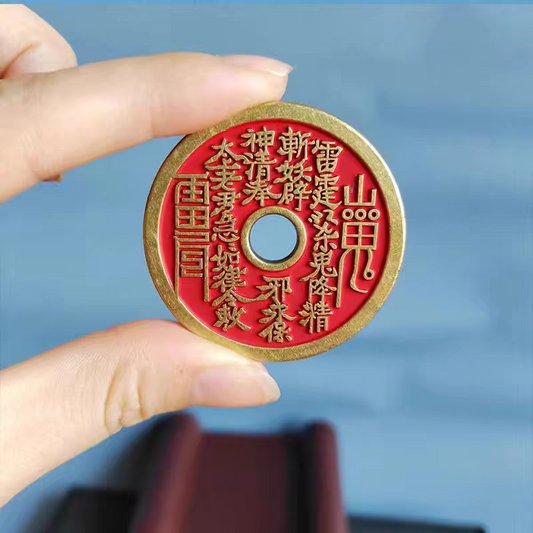
What are the similarities and differences in doctrines between Taoism and Buddhism?
paulpengShare
Taoism vs. Buddhism: Understanding the Core Differences and Shared Values in Two Ancient Asian Traditions
Imagine two ancient paths winding through the spiritual landscape of Asia, each offering unique insights into life, suffering, and harmony. Taoism, born in the heart of China, and Buddhism, rooted in the teachings of India, have shaped cultures for millennia. While both emphasize inner peace and transcendence, their approaches to spirituality, existence, and the human journey diverge in fascinating ways. Let’s explore their Similarities and differences,uncovering the essence of Taoism through this comparative lens.
Shared Foundations: Harmony and Inner Cultivation
Both Taoism and Buddhism reject materialism and stress the importance of inner cultivation. They believe in reincarnation (the cycle of birth and rebirth) and advocate practices like meditation to achieve spiritual growth. Both view the universe as a interconnected web—a cosmic order where humans must align with nature (Taoism) or transcend attachment (Buddhism).
For instance, Taoism’s Tao (“the Way”) and Buddhism’s Dharma (cosmic law) both describe a universal principle. Both traditions also value ethical living: Taoism promotes humility and simplicity, while Buddhism emphasizes compassion and the Noble Eightfold Path. At their core, both seek to alleviate suffering—though their definitions of “suffering” and “liberation” differ profoundly.
Origins and Foundational Beliefs
- Taoism: Born in China over 2,500 years ago, Taoism emerged from ancient folk beliefs, Confucianism, and the philosophy of Laozi (author of the Tao Te Ching). It venerates the Tao as the unnameable source of all life, advocating harmony with nature and “non-action” (wu wei—effortless alignment with the natural flow).
- Buddhism: Founded by Siddhartha Gautama (the Buddha) in India, Buddhism spread to China via the Silk Road. Its teachings center on the Four Noble Truths: suffering exists, arises from attachment, can be ended, and is overcome by following the Eightfold Path. The goal is Nirvana—liberation from the cycle of suffering (samsara).
Key Difference: Taoism embraces the eternity of life (seeking immortality through alignment with the Tao), while Buddhism views life as impermanent (seeking liberation from endless rebirth).
Doctrine: “Being” vs. “Non-Being”
-
Taoism: The Philosophy of “Being”
Taoism teaches that the universe arises from the Tao—an eternal, formless force. Life is a precious gift; the body is a sacred vessel. The Taoist aim is to cultivate qi (vital energy) through practices like qigong, tai chi, and herbal medicine, seeking longevity and spiritual immortality. The doctrine of “existence” (you) prevails: “From the Tao comes one, one becomes two, two becomes three, three becomes all things” (Laozi). -
Buddhism: The Philosophy of “Non-Being”
Buddhism teaches anicca (impermanence) and anatta (no permanent self). All things are transient and empty of inherent substance (“form is emptiness, emptiness is form”). Suffering stems from attachment to the illusion of permanence. To escape this, Buddhists pursue nirvana by extinguishing desire through meditation and ethical living.
Simplified Contrast:
- Taoism: “Life is real—nurture it to align with the cosmos.”
- Buddhism: “Life is suffering—transcend it through detachment.”
Practices and Rituals
-
Taoist Practices:
- Inner Alchemy: Cultivating physical and spiritual health (e.g., acupuncture, yoga-like exercises).
- Rituals: Offerings to ancestors and deities (e.g., the Jade Emperor, Guan Yin) in temples (gongguan), marked by red and gold decor.
- Scriptures: The Tao Te Ching and Zhuangzi, guiding ethical living and cosmic harmony.
-
Buddhist Practices:
- Meditation: Mindfulness to observe impermanence (e.g., Vipassana).
- Rituals: Chanting sutras and honoring Buddha statues in monasteries (si), often painted in yellow.
- Scriptures: The Tripitaka (Three Baskets), detailing the Buddha’s teachings.
Key Distinction: Taoism integrates daily life (health, family, nature) into spirituality, while Buddhism emphasizes monasticism and renunciation of worldly attachments.
Goals: Immortality vs. Liberation
- Taoism: Strives for immortality—not as a disembodied spirit, but as a harmonized being (physical, mental, spiritual) living in eternal alignment with the Tao. Taoist deities (e.g., immortals like Lü Dongbin) embody this ideal.
- Buddhism: Aims for nirvana—the cessation of suffering and the end of rebirth. The Buddha, an enlightened teacher, is the model, not a deity to be worshipped.
Cultural Note: Taoism’s polytheism (gods of fortune, health, and nature) contrasts with Buddhism’s nontheism (no supreme god, only reverence for enlightened beings).
Ethics and Society
- Taoism: Values spontaneity and harmony over rigid rules. It endorses gender equality (female deities like the Queen Mother of the West hold high status) and family reverence.
- Buddhism: Advocates strict ethical codes (e.g., the Five Precepts: no killing, stealing, lying, etc.) and compassion for all sentient beings. Monks and nuns renounce family life to pursue enlightenment.
Shared Value: Both reject aggression, promoting peace—Taoism through “non-contention,” Buddhism through ahimsa (non-harm).
A Taoist Vision: Embracing the Present
Taoism’s unique contribution lies in its celebration of earthly life. Unlike Buddhism’s focus on escaping suffering, Taoism sees the world as a sacred gift. It teaches that spiritual fulfillment is achievable here and now—through gardening, cooking, or practicing tai chi—by honoring the Tao in every breath. Taoist temples, adorned with vibrant colors and symbols (yin-yang, cranes), reflect this joy in existence.

Consider the Taoist concept of ziran (naturalness): a farmer working with seasons, a poet finding wisdom in a mountain stream. This is spirituality as daily art—no need for monasteries, just mindful participation in the cosmic dance.
Conclusion: Two Paths, One Mountain
Taoism and Buddhism, like twin peaks, offer distinct views of the spiritual mountain. Taoism invites us to climb gently, savoring the journey; Buddhism urges us to ascend swiftly, leaving attachments behind. Yet both agree: the summit is peace.
For the curious reader, Taoism’s magic lies in its earthly wisdom—a reminder that holiness dwells in the mundane. As Laozi wrote, “The Tao is near, yet people seek it far away.” In a world of rapid change, this ancient Chinese tradition whispers a timeless truth: harmony begins with embracing the life you have, not the one you imagine.












